Using your research notes with ChatGPT is a huge time saver.
But if you don't do it right, you run into AI's problems.
Here is what these are and how to overcome them:
👇
But if you don't do it right, you run into AI's problems.
Here is what these are and how to overcome them:
👇

ChatGPT is a GENERATIVE model.
It generates PLAUSIBLE text given training texts.
Training often involves filling in blanks in sentences (MASKING).
Limitation #1: AI doesn't differentiate fact from fiction.
That means: It is great with text, but terrible at facts.
It generates PLAUSIBLE text given training texts.
Training often involves filling in blanks in sentences (MASKING).
Limitation #1: AI doesn't differentiate fact from fiction.
That means: It is great with text, but terrible at facts.

To overcome that, provide "CONTEXT". i.e. additional text for the AI to work on.
Limitation #2: Context length.
paid (GPT-4): ~6 or 24k words (larger 2x price)
free (GPT-3.5): ~1.5k words
A single paper can be 2k-10k words.
That means: To work well, we must use shorter texts.
Limitation #2: Context length.
paid (GPT-4): ~6 or 24k words (larger 2x price)
free (GPT-3.5): ~1.5k words
A single paper can be 2k-10k words.
That means: To work well, we must use shorter texts.

If your notes are 1 page summaries, these limitations will make it hard or impossible to use AI.
There is a better structure: Source - Collect - Think - Outline system (See attached tweet).
But let's see why it's good for AI (and what we can do).
There is a better structure: Source - Collect - Think - Outline system (See attached tweet).
But let's see why it's good for AI (and what we can do).
https://twitter.com/Artifexx/status/1613858819158806530
Instead of summaries, use CONCEPTS.
Break up everything you read into SMALL + FACTUAL statements.
Small and factual is what we will need to overcome the AI limitations of length and fiction.
Break up everything you read into SMALL + FACTUAL statements.
Small and factual is what we will need to overcome the AI limitations of length and fiction.
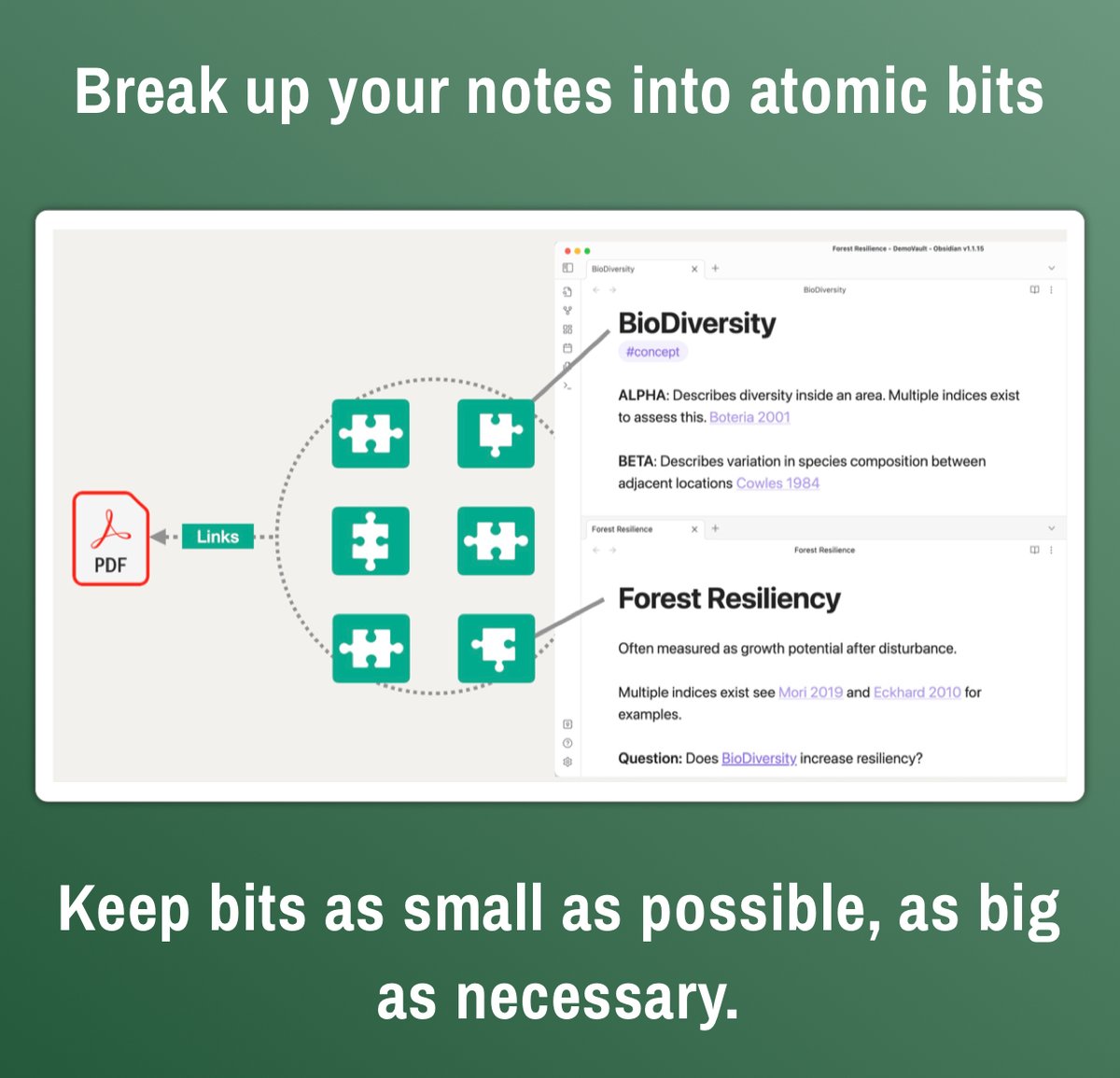
Put these statemes into COLLECTIONS and add the SOURCE.
I organize collections by topic. If they get too large, break them into separate notes.
The source information will come in handy, when we ask the AI to write.
(You can't do this without @obsdmd or a similar tool.)
I organize collections by topic. If they get too large, break them into separate notes.
The source information will come in handy, when we ask the AI to write.
(You can't do this without @obsdmd or a similar tool.)
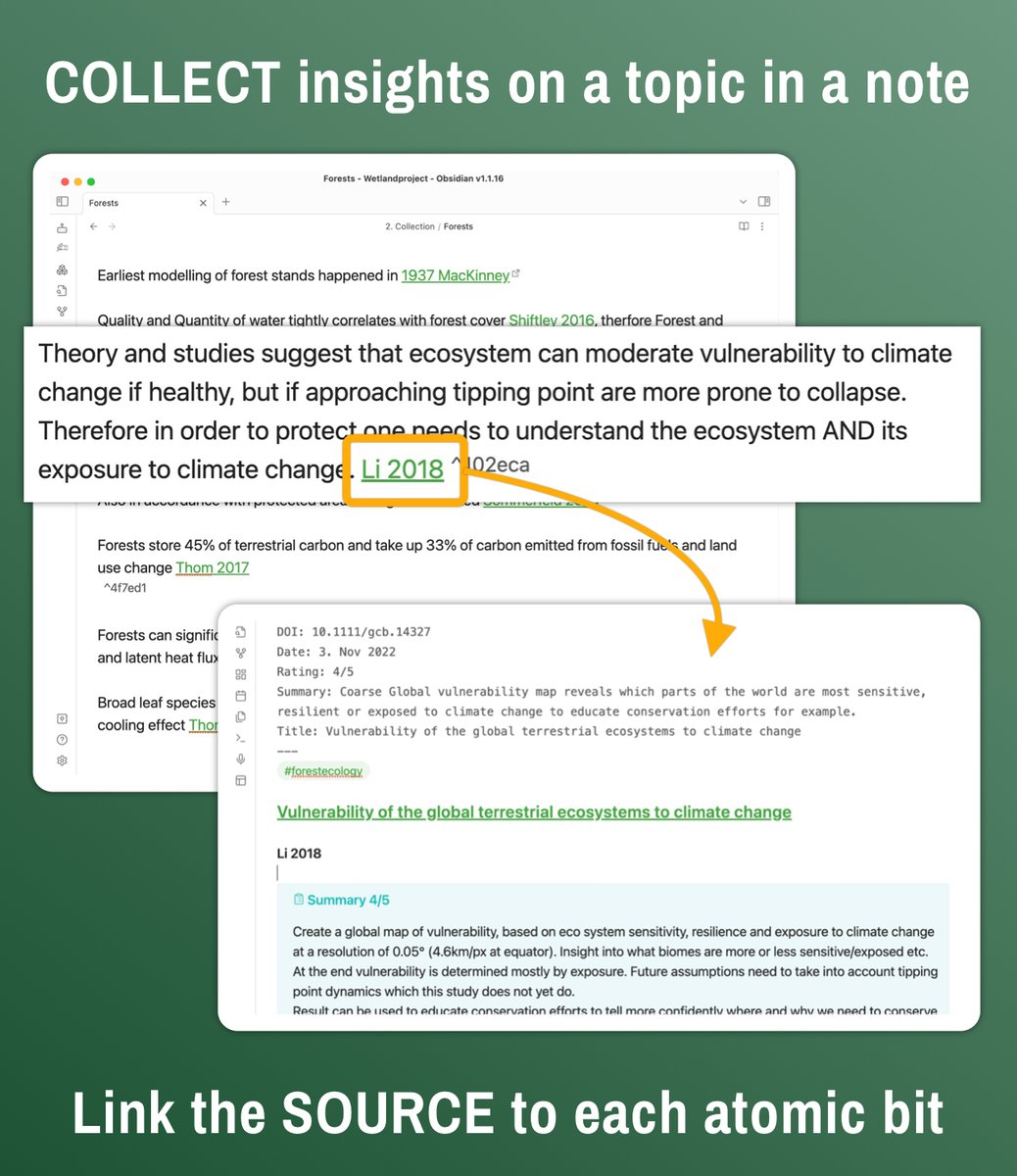
@obsdmd Collect questions, just like you collect factual statements.
Link the questions to relevant notes.
Think of combining questions with collections of facts.
This is what we are going to feed to the AI!
Link the questions to relevant notes.
Think of combining questions with collections of facts.
This is what we are going to feed to the AI!
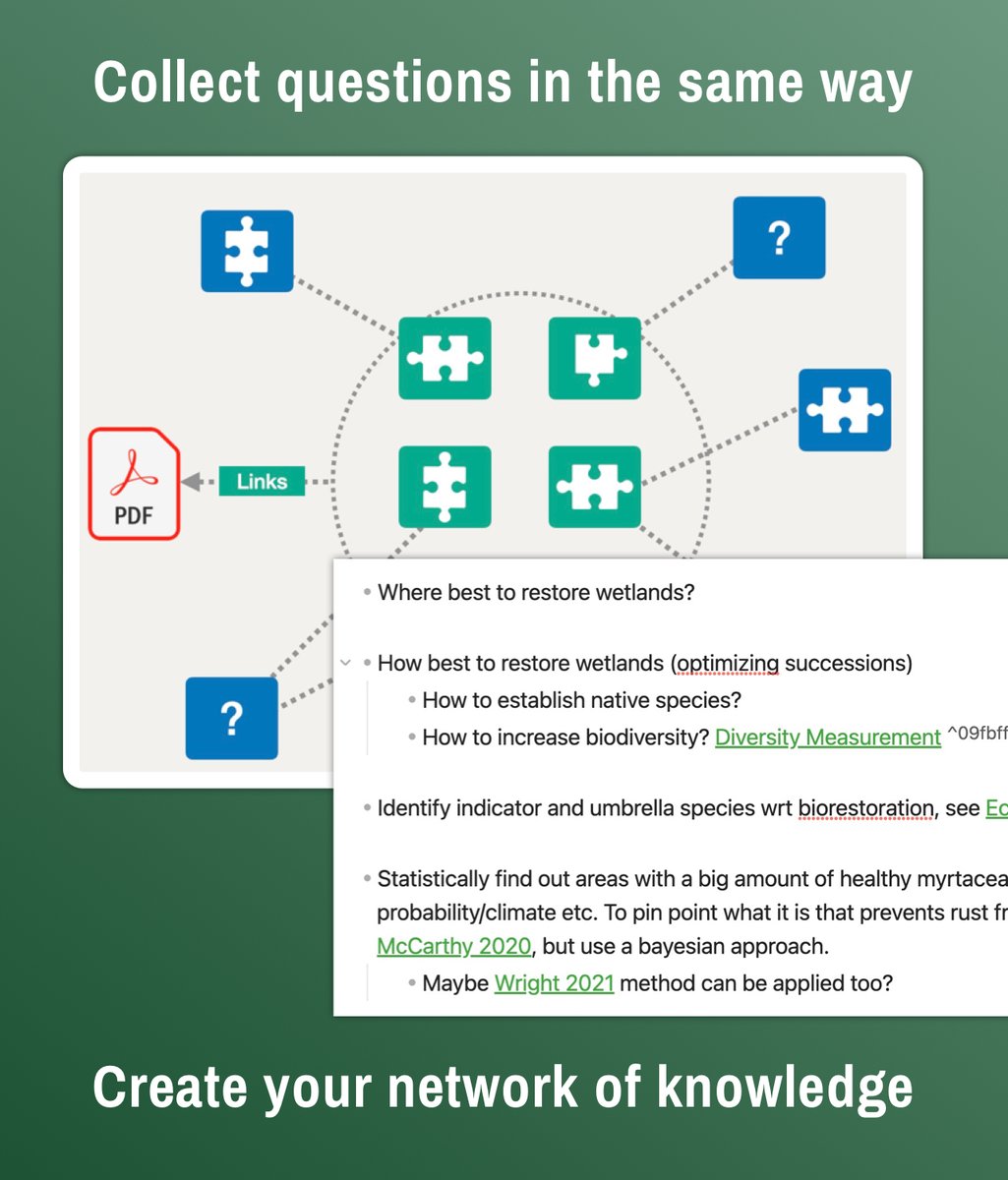
@obsdmd You can in theory use AI in your browser - but there is a much better, more performant way.
Follow this tutorial to create prompt templates for common tasks.
These prompts will be executed DIRECTLY in @obsdmd (and run faster than in the browser).
Follow this tutorial to create prompt templates for common tasks.
These prompts will be executed DIRECTLY in @obsdmd (and run faster than in the browser).
https://twitter.com/Artifexx/status/1639451801434083328
@obsdmd I manually select a few facts on a topic from my notes.
My "Scientific Summary" template asks AI to keep the source links.
{{context}} gets replaced by my selection.
No invented sources, the result is likely FACTUALLY CORRECT.
I do the research, the AI does the writing.
My "Scientific Summary" template asks AI to keep the source links.
{{context}} gets replaced by my selection.
No invented sources, the result is likely FACTUALLY CORRECT.
I do the research, the AI does the writing.
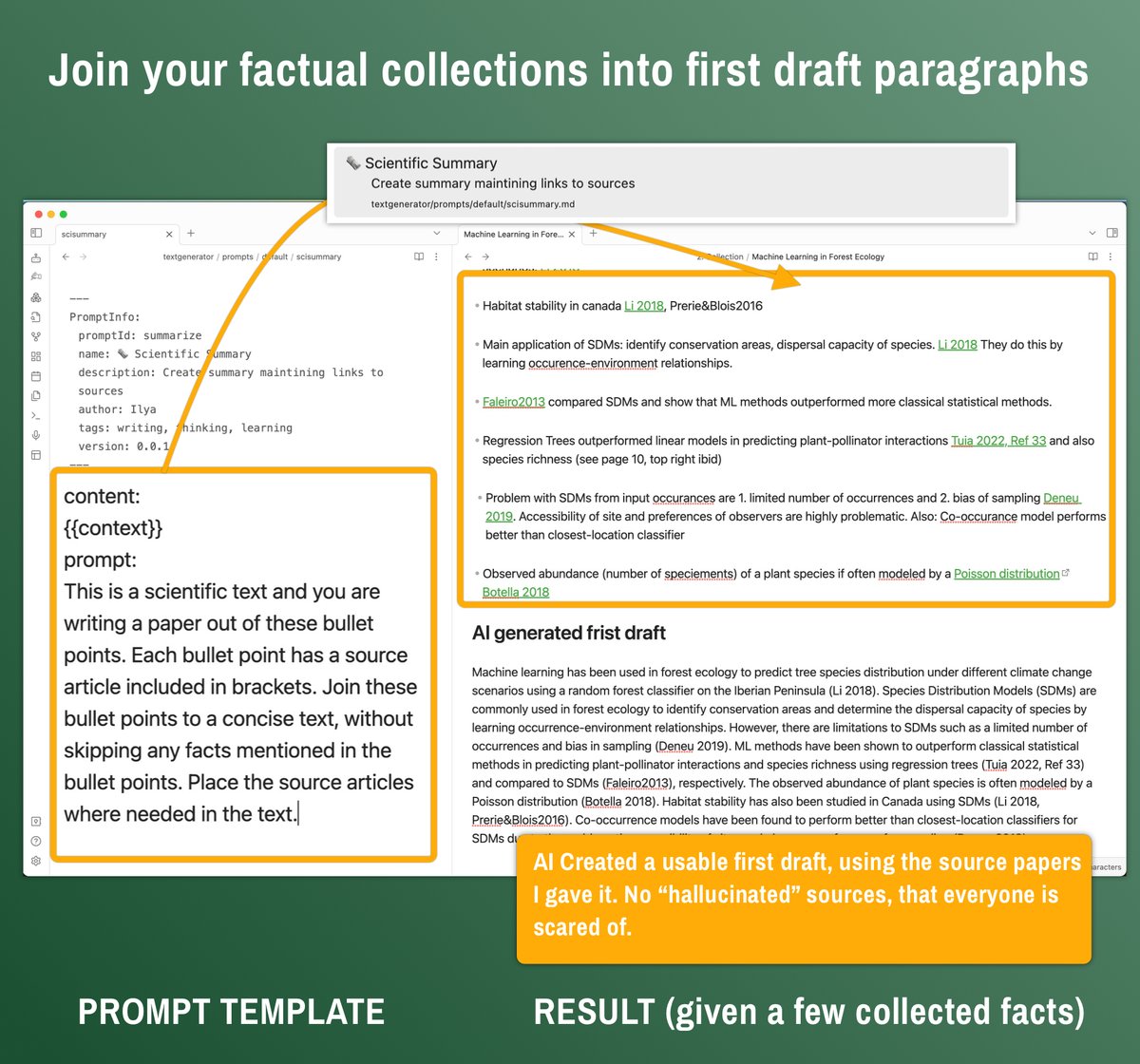
@obsdmd Repeat this process for multiple paragrpahs.
The resulting paragraphs will contain redundant introductions.
JOIN those with another prompt.
Always double check. Don't do this without understanding.
Remember: AI GENERATES plausible text, it doesn't understand.
The resulting paragraphs will contain redundant introductions.
JOIN those with another prompt.
Always double check. Don't do this without understanding.
Remember: AI GENERATES plausible text, it doesn't understand.
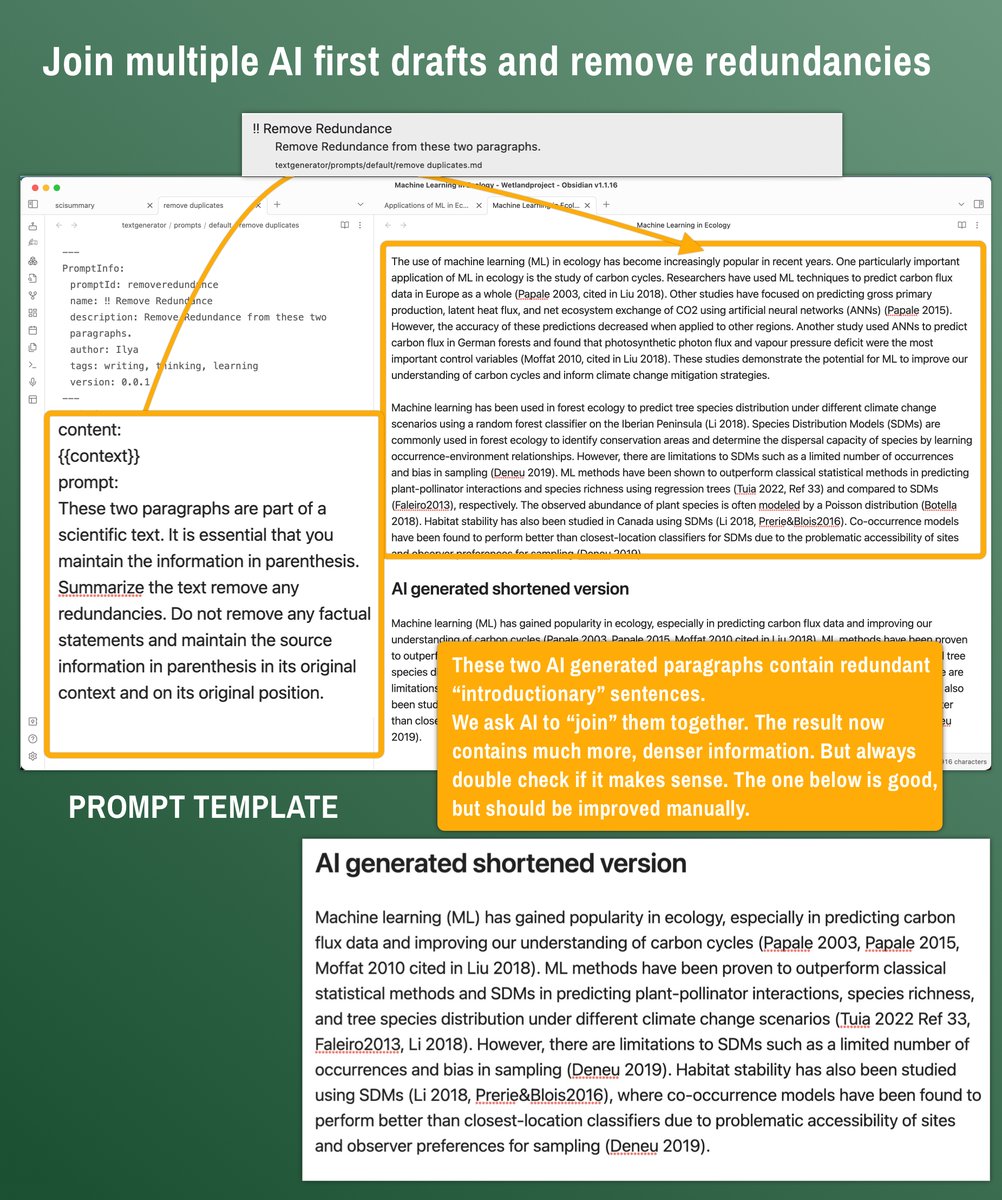
@obsdmd You'll end up with usable blocks for your publication.
Use these as raw materials to start writing!
This AI workflow will be integrated into my note taking course.
Use the system to be "AI ready".
(I'll notify you about the upcoming AI update)
effortlessacademic.carrd.co
Use these as raw materials to start writing!
This AI workflow will be integrated into my note taking course.
Use the system to be "AI ready".
(I'll notify you about the upcoming AI update)
effortlessacademic.carrd.co
@obsdmd Summary:
► AI Limitations: Factuality + Context length
► Extract SHORT + FACTUAL statements as "atomic bits".
► Use AI to join these into paragraphs...
► ...and those into bigger texts.
► Repeat to get a usable first writing. Ready to be polished and fleshed out.
► AI Limitations: Factuality + Context length
► Extract SHORT + FACTUAL statements as "atomic bits".
► Use AI to join these into paragraphs...
► ...and those into bigger texts.
► Repeat to get a usable first writing. Ready to be polished and fleshed out.
@obsdmd This AI technology is revolutionary, but also not entirely overwhelming.
Most people just don't understand it yet and use it a bit "wrong".
Generative AI generates plausible text. If you manage to work around its limitations it becomes an incredibly powerful tool.
Most people just don't understand it yet and use it a bit "wrong".
Generative AI generates plausible text. If you manage to work around its limitations it becomes an incredibly powerful tool.
• • •
Missing some Tweet in this thread? You can try to
force a refresh




















